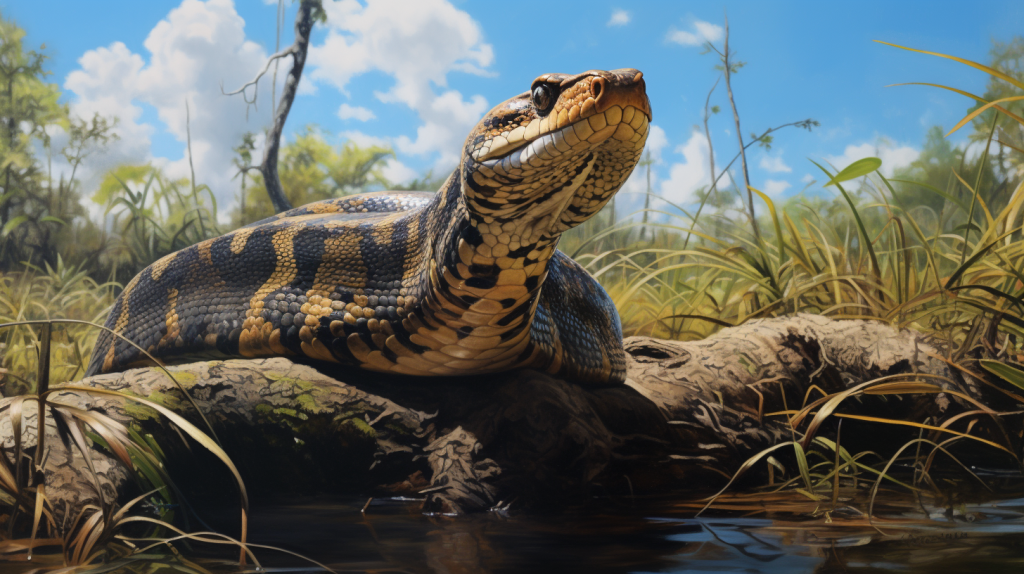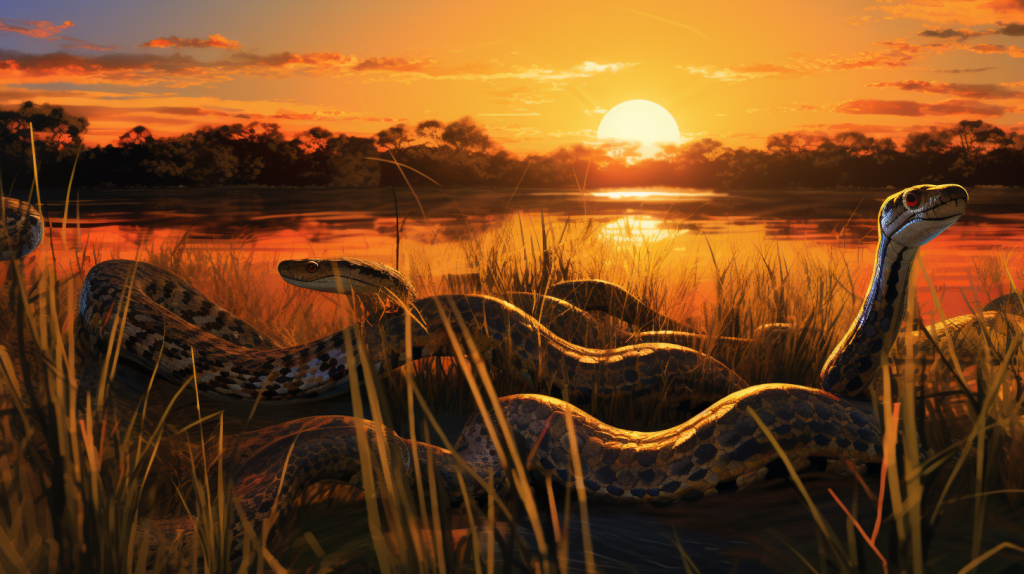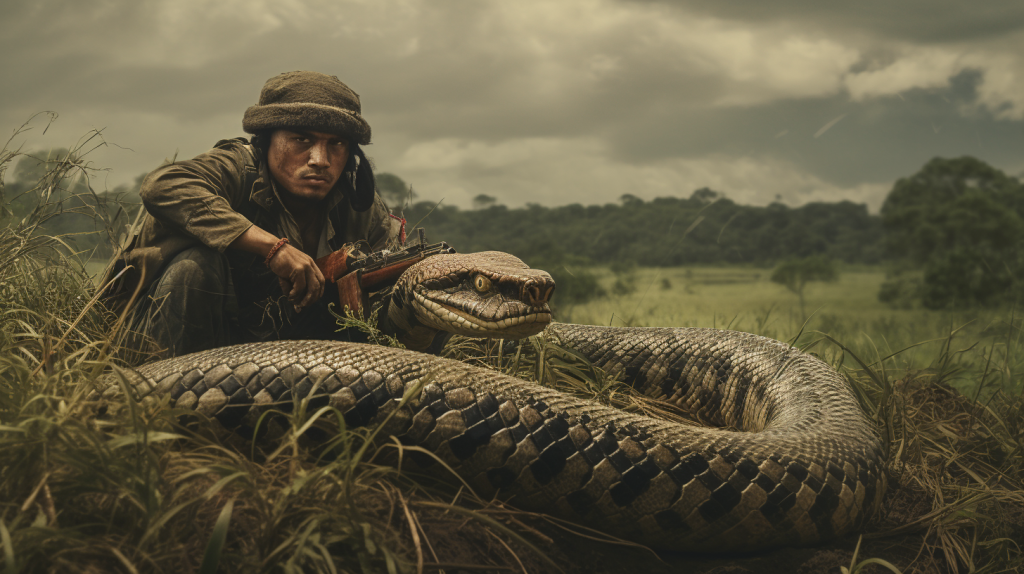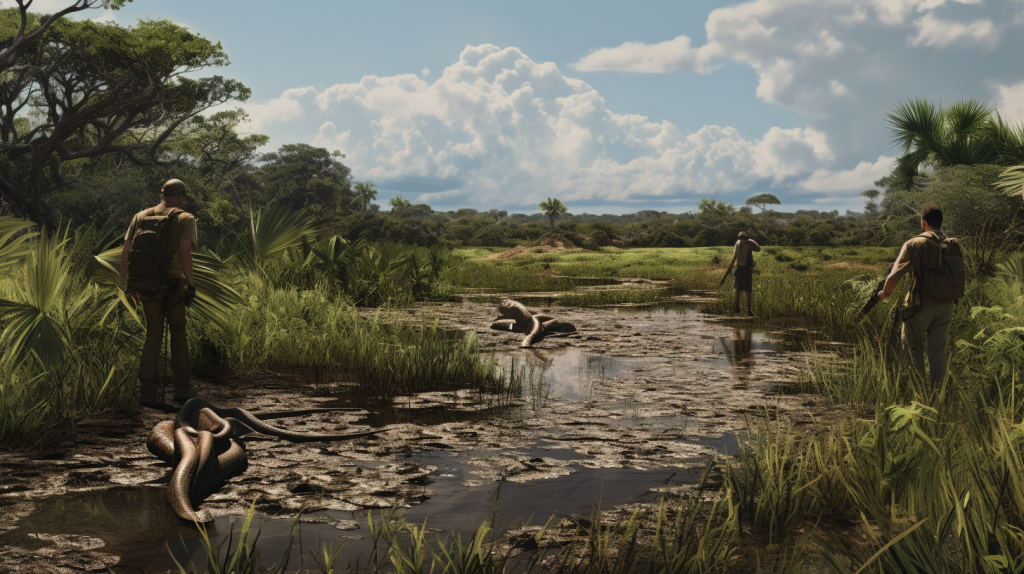In this article, we’re delving into the captivating world of the 18 foot python in Florida, unearthing the stories, challenges, and wonders associated with these colossal creatures. Have you ever wondered what it’s like to encounter a serpent that stretches as long as a school bus?
Picture an 18-foot python, coiled and camouflaged in the lush foliage of Florida’s landscape. Bursting forth with astonishing size and a burst of unexpectedness, these giant invaders have captured the attention of residents and wildlife enthusiasts alike.
Bursting onto the Scene: The Arrival of Giant Pythons
Imagine the sight: a seemingly endless snake winding its way through the subtropical paradise of Florida. Bursting onto the scene, these 18-foot pythons, known as Burmese pythons (Python bivittatus), have emerged as a notable force in the state’s ecosystems.
With origins in Southeast Asia, they’ve burst forth from their native habitat to find a new home in the Everglades and surrounding areas. Their striking patterns, ranging from intricate net-like designs to bold blotches, make them a captivating sight amidst the greenery. Bursting into the wild from the pet trade, these pythons are now both a spectacle and a concern, raising questions about their impact and coexistence with Florida’s native species.
Giant Invaders: Bursting Myths and Realities
The term “giant invader” can stir a whirlwind of emotions and perceptions. Bursting with curiosity, we’re compelled to address common misconceptions about these colossal pythons. Contrary to some beliefs, they are not venomous or poisonous. Bursting with power, they are constrictors, using their incredible strength to coil around their prey and subdue it.
These magnificent creatures have captivated the imagination with their ability to adapt and thrive in their newfound environment. From their origins in the lush landscapes of Southeast Asia, they’ve embarked on a journey that led them to the Sunshine State’s unique ecosystems.
Bursting into the scene, their impressive length of up to 18 feet showcases their dominance in this new territory. But the question remains: how did these giant invaders, with patterns resembling intricate mosaics, find their way to Florida’s shores? Delving into their history offers insights into the intriguing story of their migration and establishment in a land far from their native home.
An Exotic Journey: The Route of the 18-Foot Python
Picture an exotic journey that spans continents and oceans, culminating in the subtropical haven of Florida. Bursting through the pet trade, these pythons made their way into the hearts and homes of enthusiasts, their allure enhanced by their remarkable size and mesmerizing patterns.
But as captivity couldn’t contain their wild spirit, they burst forth into the unknown, leaving behind the confines of tanks and enclosures. Escapes and releases led to their establishment in Florida’s ecosystems, triggering a burst of adaptation that allowed them to thrive in their new surroundings.
The journey of an 18-foot python from distant lands to the swamps of Florida is a testament to the burst of resilience and adaptability inherent in these serpents. It’s a tale of bursting barriers and the quest for freedom that led them to carve their place in a land that was once foreign but now hosts their presence in a burst of ecological complexity.
Impacts of the Giant Invasion: Bursting Ecosystem Dynamics
The entrance of giant invaders into a delicate ecosystem can be likened to an unexpected guest at a carefully orchestrated event. Bursting through the doors, they disrupt the flow and alter the dynamics with their sheer presence. The 18-foot pythons in Florida are no exception to this analogy.
Bursting forth as apex predators, they establish themselves as formidable hunters, preying upon a variety of native species, including mammals, birds, and reptiles. This burst of predation has a cascading effect, leading to shifts in population numbers and a burst of concern for the state’s biodiversity.
Native species accustomed to their roles in the food web now find themselves faced with a new player, altering interactions and potentially affecting the entire ecosystem’s balance. The intricate web of life, woven over time, undergoes a burst of rearrangement that can challenge the resilience of the native flora and fauna.
Conclusion: A Burst of Balance and Complexity
The tale of the 18 foot python in Florida is one of awe-inspiring bursts – bursts of size, bursts of adaptation, and bursts of challenges. As we navigate the bursts of complexities presented by these giant invaders, we’re faced with the need for bursts of collaboration, innovation, and determination. Bursting with life, Florida’s ecosystems are a delicate balance, and the presence of 18-foot pythons adds both intrigue and urgency to the ongoing story of coexistence.
FAQs About 18 Foot Python In Florida
Q: Are 18-foot pythons native to Florida?
No, 18-foot pythons, specifically Burmese pythons, are not native to Florida. Bursting forth from Southeast Asia, they were introduced through the exotic pet trade and have since established themselves in the wild.
Q: What impacts do 18-foot pythons have on native wildlife?
The impact of 18-foot pythons on native wildlife is significant. Bursting forth as top predators, they prey on various species, leading to declines in populations and disrupting the delicate balance of the ecosystem.
Q: Are efforts being made to control the python population?
Yes, a burst of efforts is being made to control the python population. Bursting with conservation initiatives, removal programs, and research, experts are striving to mitigate the impact of these invaders on Florida’s ecosystems.
Q: Can 18-foot pythons pose a threat to humans?
While attacks on humans are rare, there have been instances where large pythons, including 18-foot ones, have posed a threat to humans, especially if cornered or provoked.
Q: Can the python invasion be reversed?
Reversing the python invasion is a complex challenge. However, the burst of efforts by researchers and conservationists offers hope for managing the population and minimizing their impact on native species.
References:
- Florida Fish and Wildlife Conservation Commission. (n.d.). Burmese Pythons in Florida. https://myfwc.com/wildlifehabitats/nonnatives/reptiles/burmese-python/
- University of Florida IFAS Extension. (2021). Burmese Python. https://edis.ifas.ufl.edu/publication/UW314
- National Park Service. (2021). Burmese Pythons in the Everglades. https://www.nps.gov/ever/learn/nature/burmese-python.htm
- Python Patrol. (n.d.). Python Patrol. https://www.pythonpatrolflorida.org/
- National Wildlife Federation. (2021). Invasive Burmese Pythons in Florida. https://www.nwf.org/Educational-Resources/Wildlife-Guide/Reptiles/Burmese-Python





